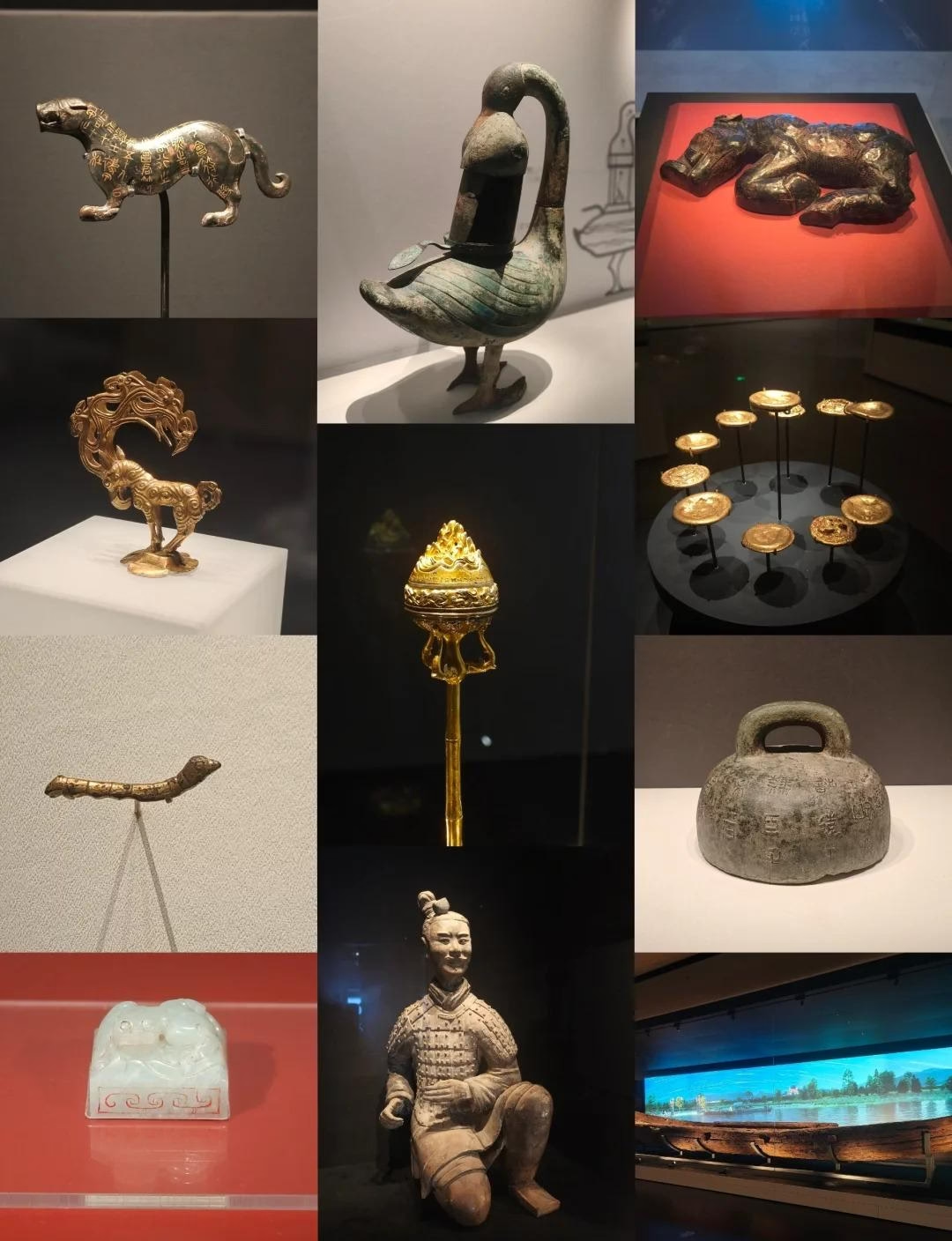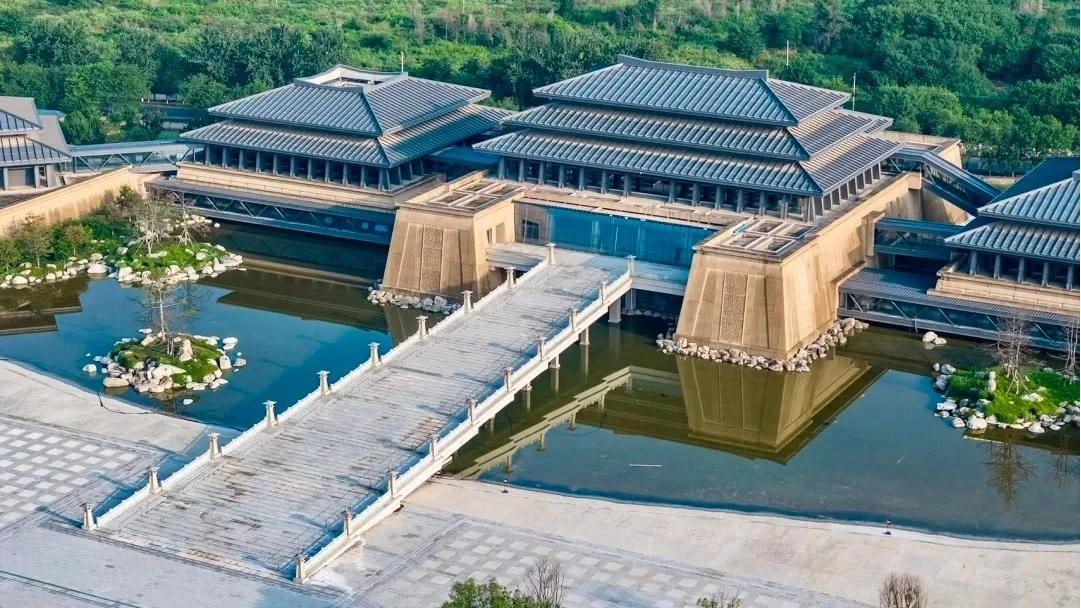The Qin and Han Pavilion at the Shaanxi History Museum offers an unparalleled journey into the heart of ancient Chinese civilization. Highlighting the theme “Qin and Han Civilization,” this pavilion merges cutting-edge interactive technology with traditional artifacts, creating an engaging, immersive experience for visitors of all ages. Divided into five halls, it presents a vivid narrative of the political, economic, cultural, and technological achievements of the Qin and Han dynasties, making it a must-visit for history enthusiasts and travelers alike.
Overview of the Qin and Han Pavilion
The Qin and Han Pavilion breaks away from traditional exhibition norms by adopting a “Big History + Focused Topics” format. Through interactive and sensory-rich technologies, this pavilion breathes life into history, allowing visitors to truly experience the grandeur of the Qin and Han eras. It consists of five major exhibition halls:
- Main Exhibition Hall: Qin and Han Civilization
- Site Hall: Cities and Tombs
- Art Hall: Techniques and Beauty
- Temporary Exhibition Hall
- Public Archaeology Center
The Main Exhibition Hall showcases the achievements of the Qin and Han periods from various perspectives, including politics, economy, military, culture, technology, and foreign exchanges. These dynasties represent a transformative era in Chinese history, marking the formation of the Chinese nation dominated by the Han ethnicity. The side halls complement the main hall with specialized themes such as archaeology and art, offering deeper insights into the brilliance of Qin and Han civilizations.
Essential Visitor Information
- Opening Hours: Daily from 9:30 AM to 5:00 PM (Last entry at 4:00 PM; Closed on Tuesdays).
- Reservations: Book your visit via the official WeChat account of the Shaanxi History Museum.
- Address: East section of Lanchi Third Road, Qinhan New City, Xixian New District, Xi’an. The museum is located near the Qin Xianyang City Ruins and the Western Han Imperial Mausoleum Ruins.
- Getting There: Take Metro Line 14 to “Qin Palace (秦宫)” Station. After exiting the station, turn right and walk straight. Cross the overpass, and the pavilion is right across.
Hidden Design Highlights in Qin and Han Pavilion
First Exhibition Hall
Interactive Display on Spring and Autumn Reforms: Near the entrance, seven display cases represent the reforms of different states during the Spring and Autumn Period. Most cases are hard to open, symbolizing resistance to reforms in various states. The Qin state’s case, however, is wide open, symbolizing its success in reform. Informative content on Shang Yang’s reforms and the history of the period enhances visitor understanding.
Projection of Qin and Han Ritual Systems: A fascinating projection above the jade artifact case illustrates the Qin and Han national ritual systems, including mountain and river sacrifices, seasonal rites, and imperial tours of Qin Shihuang and Emperor Wu of Han. This two-minute animation is a must-see for its detailed presentation.
Second Exhibition Hall
Chinese Mechanical Systems: Behind an arched panel, discover an introduction to the 28 constellations. Touch the black panel nearby, and constellations light up around you, creating a stunning sensory experience.
Cities and Tombs Hall
Immersive Space: Near the exit, look for a curtained area showcasing ancient perceptions of the afterlife. The colorful and dreamlike imagery offers a moment of rest and reflection amidst your tour.
Techniques and Beauty Hall
Dance Across Time: This hall features a circular screen where modern shadow dancers perform alongside Han Dynasty music and dance figurines. The wall projections bring ancient figures to life, blending the ancient with the modern in a breathtaking display.
Top 10 Treasures of the Qin and Han Pavilion

- Tiger Tally of Du (Late Warring States Period): Found in the First Exhibition Hall, this military tally was used to command troops, reflecting the military strategies of the Warring States Period.
- Bronze Weights: Gaonü Grainstone (Warring States Period): These weights, unearthed in western Xi’an, highlight the precise measurement systems of ancient China.
- Lacquered Pig (Qin Dynasty): Showcasing the exquisite craftsmanship of Qin-era lacquerware, this artifact is displayed in the Second Exhibition Hall.
- Painted Goose and Fish Lamp (Western Han Dynasty): Discovered in Shaanxi’s Shenmu County, this masterpiece of Han lighting design combines functionality and artistry.
- Gold Beast Figurine (Warring States Period): A stunning example of Xiongnu artistic craftsmanship, the figurine’s elegant lines and mysterious form captivate viewers in the Second Exhibition Hall.
- Gilded Bronze Silkworm (Han Dynasty): Found in Shiquan County, this artifact signifies the advanced state of sericulture during the Han Dynasty.
- “Silk Road No. 1” Ancient Shipwreck (Han Dynasty): China’s oldest discovered plank ship highlights the beginnings of large-scale international trade during the Qin and Han eras.
- Empress Seal (Western Han Dynasty): Located in the Cities and Tombs Hall, this rare jade imperial seal is one of the most significant finds from the Han period.
- Gilded Silver Bamboo-Pattern Incense Burner (Western Han Dynasty): Unearthed in Xingping, this intricately designed incense burner was likely a gift from Emperor Wu of Han to his sister, the Princess of Yangxin.
- Double Phoenix Golden Silver Plate (Tang Dynasty): Displayed in the Temporary Exhibition Hall, this plate’s ornate design and rich historical inscriptions make it a valuable artifact.

